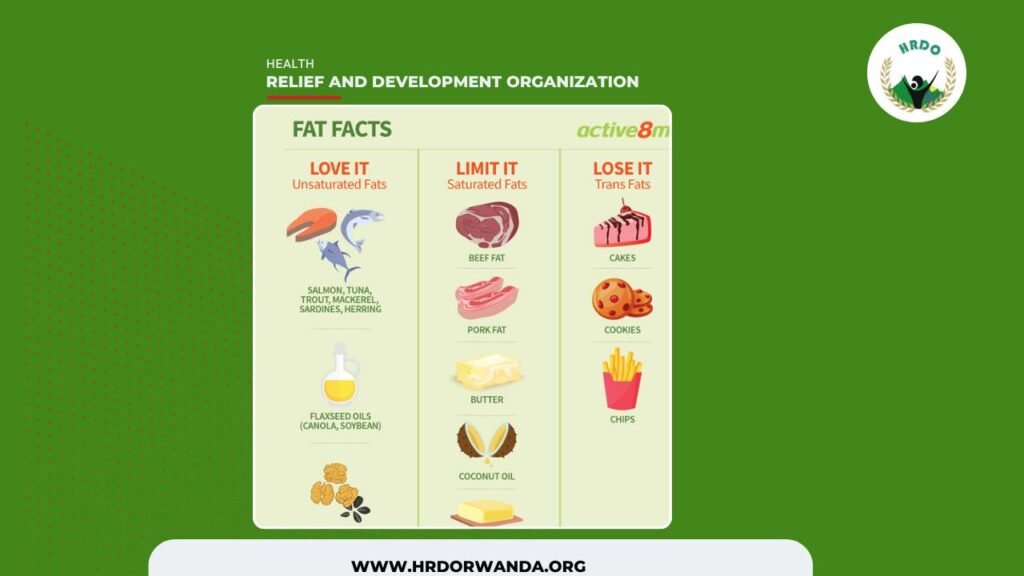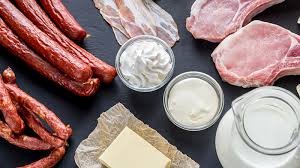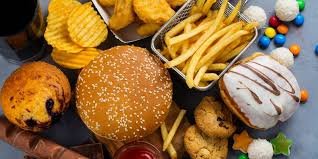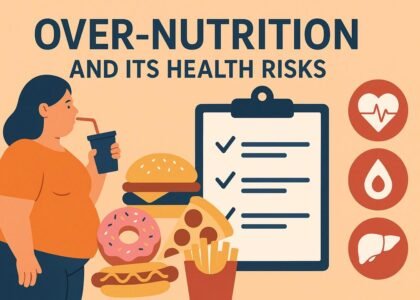
In the world of nutrition, not all fats are created equal. While fat often gets a bad reputation, it is actually a vital macronutrient that our bodies need for energy, cell growth, hormone production, and nutrient absorption. The key lies in choosing the right types of fats.
Let’s break down the types of fats into three simple categories: Love It, Limit It, and Lose It — based on their impact on your health.
LOVE IT: Unsaturated Fats
These are the healthy fats that your body truly loves. They help reduce bad cholesterol levels, lower the risk of heart disease, and provide essential fatty acids that our bodies can’t produce on their own.

⭐ Best Sources:
• Fatty Fish: Salmon, tuna, trout, mackerel, sardines, and herring are rich in omega-3 fatty acids, known for heart and brain health.
• Plant-Based Oils: Flaxseed, canola, and soybean oils are excellent choices for cooking and salad dressings.
• Nuts and Seeds: Walnuts and chia seeds are nutrient-dense snacks packed with healthy fats, fiber, and antioxidants.
👉 Tip: Incorporate these fats into your daily meals by grilling salmon, sprinkling chia seeds on yogurt, or using canola oil in cooking.
LIMIT IT: Saturated Fats
These fats are best consumed in moderation. While they aren’t entirely bad, too much saturated fat can raise your LDL (bad) cholesterol levels, increasing the risk of heart disease and stroke.

⚠ Common Sources:
• Animal Fats: Beef and pork fat are high in saturated fat.
• Dairy Fats: Butter and some full-fat dairy products contribute to your saturated fat intake.
• Plant-Based Saturated Fats: Coconut oil, though natural, still contains a high amount of saturated fat.
• Processed Fats: Shortening and stick margarine are also high in saturated fats.
👉 Tip: Replace butter with olive oil or avocado, and try leaner cuts of meat like chicken breast instead of pork.
LOSE IT: Trans Fats
Trans fats are the worst kind of fats for your health and should be eliminated as much as possible. They not only raise LDL cholesterol but also lower HDL (good) cholesterol — a double whammy for heart health.

🚫 Hidden Dangers:
• Baked Goods: Cakes and cookies often contain partially hydrogenated oils, a source of trans fats.
• Fried Foods: Chips and other deep-fried snacks are typically cooked in oils high in trans fats.
• Processed Foods: Many packaged foods use trans fats to extend shelf life, but at the expense of your health.
👉 Tip: Always read nutrition labels. If you see “partially hydrogenated oils,” it’s best to put that product back on the shelf.
The Takeaway
Understanding the different types of fats is the first step to making smarter food choices. Here’s a quick recap:
Category Type of Fat What to Do Examples
LOVE IT Unsaturated Fats Eat Regularly Fish, plant oils, nuts, seeds
LIMIT IT Saturated Fats Eat Occasionally Butter, red meat, coconut oil
LOSE IT Trans Fats Avoid Completely Cakes, chips, shortening
Fat isn’t the enemy — bad fat choices are. By prioritizing healthy unsaturated fats, moderating your intake of saturated fats, and eliminating trans fats, you’ll support your heart, brain, and overall well-being.
So, the next time you’re planning your meal or snack, remember the golden rule: Love the good, limit the middle, and lose the worst.
🥗 Stay healthy, stay informed. Your heart will thank you!



